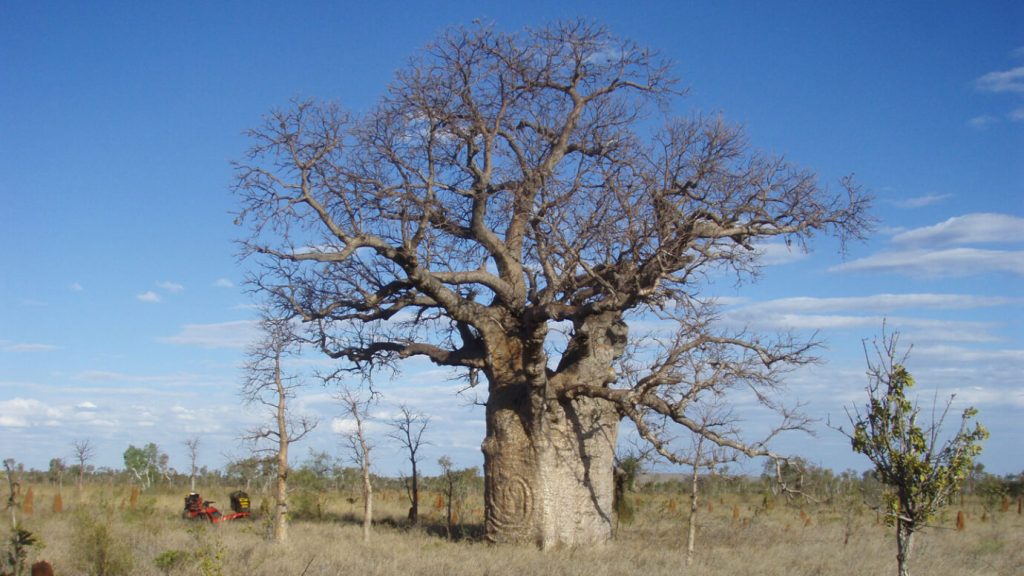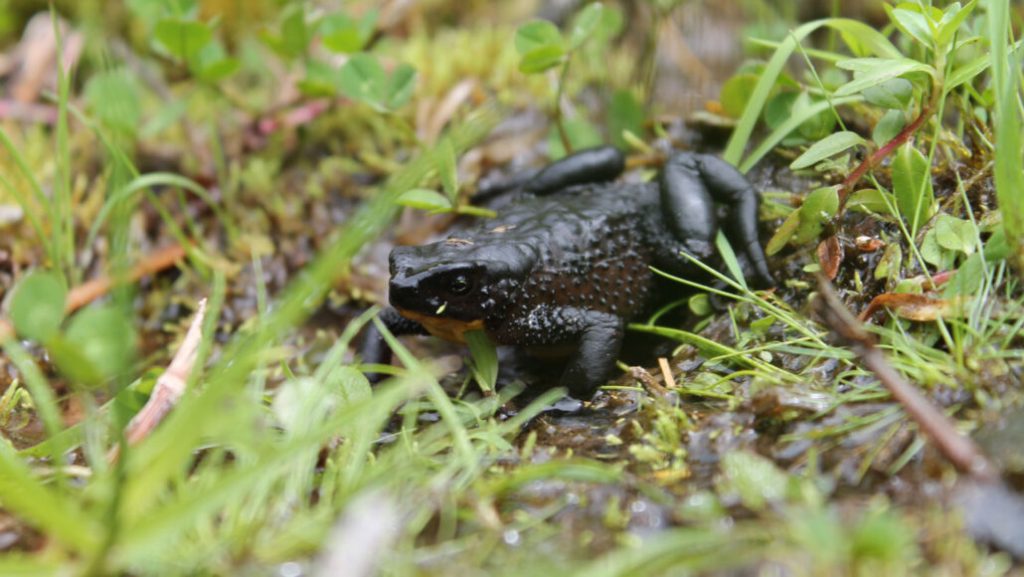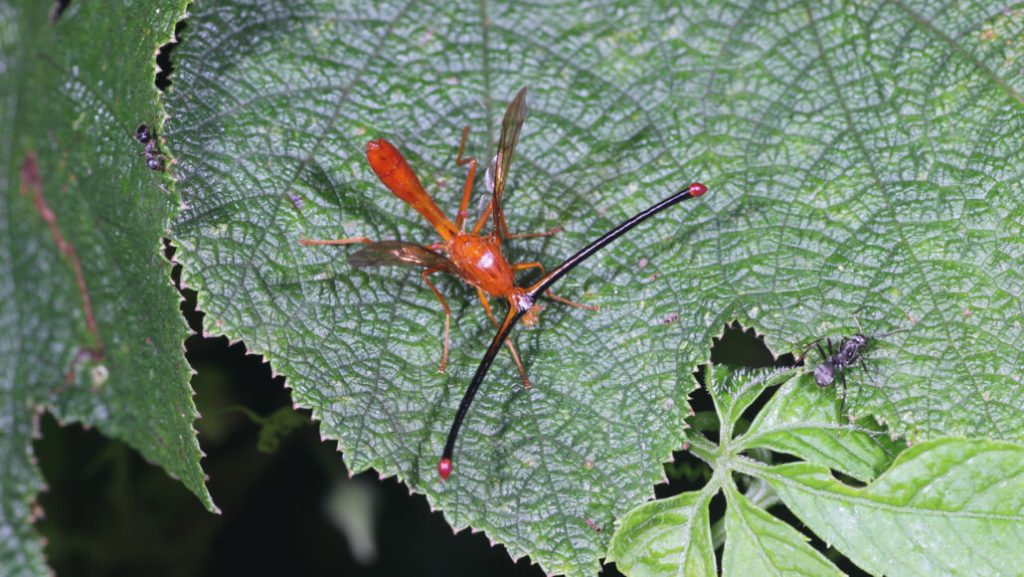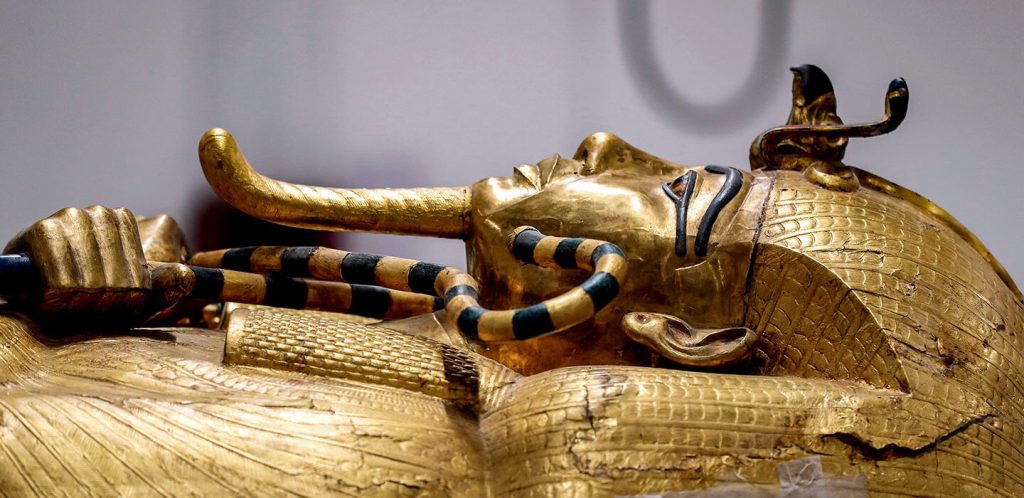Louis Pasteur’s devotion to truth transformed what we know about health and disease
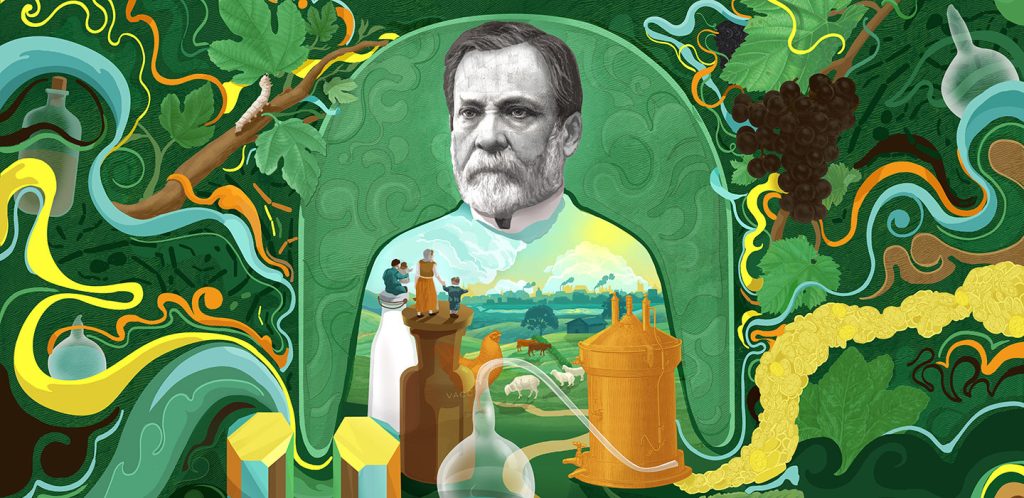
Great scientists become immortalized in various ways.
Some through names for obscure units of measurement (à la Hertz, Faraday and Curie). Others in elements on the periodic table (Mendeleev, Seaborg, Bohr, among many others). A few become household names symbolizing genius — like Newton in centuries past and nowadays, Einstein. But only one has been honored on millions and millions of cartons of milk: the French chemist, biologist and evangelist for experimental science Louis Pasteur.
Pasteur was born 200 years ago this December, the most significant scientist birthday bicentennial since Charles Darwin’s in 2009. And Pasteur ranked behind only Darwin among the most exceptional biological scientists of the 19th century.
Pasteur not only made milk safe to drink, but also rescued the beer and wine industry. He established the germ theory of disease, saved the French silkworm population, confronted the scourges of anthrax and rabies, and transformed the curiosity of vaccination against smallpox into a general strategy for treating and preventing human diseases. He invented microbiology and established the foundations for immunology.
Had he been alive after 1901, when Nobel Prizes were first awarded, he would have deserved one every year for a decade. No other single scientist demonstrated more dramatically the benefit of science for humankind.
He was not, however, exactly a saint. A Pasteur biographer, Hilaire Cuny, called him “a mass of contradictions.” Pasteur was ambitious and opportunistic, sometimes arrogant and narrow-minded, immodest, undiplomatic and uncompromising. In the scientific controversies he engaged in (and there were many), he was pugnacious and belligerent. He did not suffer criticism silently and was often acerbic in his responses. To his laboratory assistants, he was demanding, dictatorial and aloof. Despite his revolutionary spirit in pursuing science, in political and social matters, he was conformist and deferential to authority.
And yet he was a tireless worker, motivated by service to humankind, faithful to his family and unwaveringly honest. He was devoted to truth, and therefore also to science.
In his youth, Pasteur did not especially excel as a student. His interests inclined toward art rather than science, and he did display exceptional skill at drawing and painting. But in light of career considerations (his father wanted him to be a scholar), Pasteur abandoned art for science and so applied to the prestigious École Normale Supérieure in Paris for advanced education. He finished 15th in the competitive entrance examination, good enough to secure admission. But not good enough for Pasteur. He spent another year on further studies emphasizing physical sciences and then took the École Normale exam again, finishing fourth. That was good enough, and he entered the school in 1843. There he earned his doctoral degree, in physics and chemistry, in 1847.
Among his special interests at the École Normale was crystallography. In particular he was drawn to investigate tartaric acid. It’s a chemical found in grapes responsible for tartar, a potassium compound that collects on the surfaces of wine vats. Scientists had recently discovered that tartaric acid possesses the intriguing power of twisting light — that is, rotating the orientation of light waves’ vibrations. In light that has been polarized (by passing it through certain crystals, filters or some sunglasses), the waves are all aligned in a single plane. Light passing through a tartaric acid solution along one plane emerges in a different plane.
Even more mysteriously, another acid (paratartaric acid, or racemic acid), with the exact same chemical composition as tartaric acid, did not twist light at all. Pasteur found that suspicious. He began a laborious study of the crystals of salts derived from the two acids. He discovered that racemic acid crystals could be sorted into two asymmetric mirror-image shapes, like pairs of right-handed and left-handed gloves. All the tartaric acid crystals, on the other hand, had shapes with identical asymmetry, analogous to gloves that were all right-handed.
Pasteur deduced that the asymmetry in the crystals reflected the asymmetric arrangement of atoms in their constituent molecules. Tartaric acid twisted light because of the asymmetry of its molecules, while in racemic acid, the two opposite shapes canceled out each other’s twisting effects.
Pasteur built the rest of his career on this discovery. His research on tartaric acid and wine led eventually to profound realizations about the relationship between microbes and human disease. Before Pasteur, most experts asserted that fermentation was a natural nonbiological chemical process. Yeast, a necessary ingredient in the fermenting fluid, was supposedly a lifeless chemical acting as a catalyst. Pasteur’s experiments showed yeast to be alive, a peculiar kind of “small plant” (now known to be a fungus) that caused fermentation by biological activity.
Pasteur demonstrated that, in the absence of air, yeast acquired oxygen from sugar, converting the sugar to alcohol in the process. “Fermentation by yeast,” he wrote, is “the direct consequence of the processes of nutrition,” a property of a “minute cellular plant … performing its respiratory functions.” Or more succinctly, he proclaimed that “fermentation … is life without air.” (Later scientists found that yeast accomplished fermentation by emitting enzymes that catalyzed the reaction.)
Pasteur also noticed that additional microorganisms present during fermentation could be responsible for the process going awry, a problem threatening the viability of French winemaking and beer brewing. He solved that problem by developing a method of heating that eliminated the bad microorganisms while preserving the quality of the beverages. This method, called “pasteurization,” was later applied to milk, eliminating the threat of illness from drinking milk contaminated by virulent microorganisms. Pasteurization became standard public health practice in the 20th century.
Incorporating additional insights from studies of other forms of fermentation, Pasteur summarized his work on microbial life in a famous paper published in 1857. “This paper can truly be regarded as the beginning of scientific microbiology,” wrote the distinguished microbiologist René Dubos, who called it “one of the most important landmarks of biochemical and biological sciences.”
The germ theory of disease is born
Pasteur’s investigations of the growth of microorganisms in fermentation collided with another prominent scientific issue: the possibility of spontaneous generation of life. Popular opinion even among many scientists held that microbial life self-generated under the proper conditions (spoiled meat, for example). Demonstrations by the 17th century Italian scientist Francesco Redi challenged that belief, but the case against spontaneous generation was not airtight.
In the early 1860s Pasteur undertook a series of experiments that should have left no doubt that spontaneous generation, under conditions encountered on Earth today, was an illusion. Yet he was nevertheless accosted by critics, such as the French biologist Charles-Philippe Robin, to whom he returned verbal fire. “We trust that the day will come when M. Robin will … acknowledge that he has been in error on the subject of the doctrine of spontaneous generation, which he continues to affirm, without adducing any direct proofs in support of it,” Pasteur remarked.
It was his work on spontaneous generation that led Pasteur directly to the development of the germ theory of disease.
For centuries people had suspected that some diseases must be transmitted from person to person by close contact. But determining exactly how that happened seemed beyond the scope of scientific capabilities. Pasteur, having discerned the role of germs in fermentation, saw instantly that something similar to what made wine go bad might also harm human health.
After disproving spontaneous generation, he realized that there must exist “transmissible, contagious, infectious diseases of which the cause lies essentially and solely in the presence of microscopic organisms.” For some diseases, at least, it was necessary to abandon “the idea of … an infectious element suddenly originating in the bodies of men or animals.” Opinions to the contrary, he wrote, gave rise “to the gratuitous hypothesis of spontaneous generation” and were “fatal to medical progress.”
His first foray into applying the germ theory of disease came during the late 1860s in response to a decline in French silk production because of diseases afflicting silkworms. After success in tackling the silkworms’ maladies, he turned to anthrax, a terrible illness for cattle and humans alike. Many medical experts had long suspected that some form of bacteria caused anthrax, but it was Pasteur’s series of experiments that isolated the responsible microorganism, verifying the germ theory beyond doubt. (Similar work by Robert Koch in Germany around the same time provided further confirmation.)
Understanding anthrax’s cause led to the search for a way to prevent it. In this case, a fortuitous delay in Pasteur’s experiments with cholera in chickens produced a fortunate surprise. In the spring of 1879 he had planned to inject chickens with cholera bacteria he had cultured, but he didn’t get around to it until after his summer vacation. When he injected his chickens in the fall, they unexpectedly failed to get sick. So Pasteur prepared a fresh bacterial culture and brought in a new batch of chickens.
When both the new chickens and the previous batch were given the fresh bacteria, the new ones all died, while nearly all of the original chickens still remained healthy. And so, Pasteur realized, the original culture had weakened in potency over the summer and was unable to cause disease, while the new, obviously potent culture did not harm the chickens previously exposed to the weaker culture. “These animals have been vaccinated,” he declared.
Vaccination, of course, had been invented eight decades earlier, when British physician Edward Jenner protected people from smallpox by first exposing them to cowpox, a similar disease acquired from cows. (Vaccination comes from cowpox’s medical name, vaccinia, from vacca, Latin for cow.) Pasteur realized that the chickens surprisingly displayed a similar instance of vaccination because he was aware of Jenner’s discovery. “Chance favors the prepared mind,” Pasteur was famous for saying.
Because of his work on the germ theory of disease, Pasteur’s mind was prepared to grasp the key role of microbes in the prevention of smallpox, something Jenner could not have known. And Pasteur instantly saw that the specific idea of vaccination for smallpox could be generalized to other diseases. “Instead of depending on the chance finding of naturally occurring immunizing agents, as cowpox was for smallpox,” Dubos observed, “it should be possible to produce vaccines at will in the laboratory.”
Pasteur cultured the anthrax microbe and weakened it for tests in farm animals. Success in such tests not only affirmed the correctness of the germ theory of disease, but also allowed it to gain a foothold in devising new medical practices.
Later Pasteur confronted an even more difficult microscopic foe, the virus that causes rabies. He had begun intense experiments on rabies, a horrifying disease that’s almost always fatal, caused usually by the bites of rabid dogs or other animals. His experiments failed to find any bacterial cause for rabies, leading him to realize that it must be the result of some agent too small to see with his microscope. He could not grow cultures in lab dishes of what he could not see. So instead he decided to grow the disease-causing agent in living tissue — the spinal cords of rabbits. He used dried-out strips of spinal cord from infected rabbits to vaccinate other animals that then survived rabies injections.
Pasteur hesitated to test his rabies treatment on humans. Still, in 1885 when a mother brought to his lab a 9-year-old boy who had been badly bitten by a rabid dog, Pasteur agreed to administer the new vaccine. After a series of injections, the boy recovered fully. Soon more requests came for the rabies vaccine, and by early the next year over 300 rabies patients had received the vaccine and survived, with only one death among them.
Popularly hailed as a hero, Pasteur was also vilified by some hostile doctors, who considered him an uneducated interloper in medicine. Vaccine opponents complained that his vaccine was an untested method that might itself cause death. But of course, critics had also rejected Pasteur’s view of fermentation, the germ theory of disease and his disproof of spontaneous generation.
Pasteur stood his ground and eventually prevailed (although he did not turn out to be right about everything). His attitude and legacy of accomplishments inspired 20th century scientists to develop vaccines for more than a dozen deadly diseases. Still more diseases succumbed to antibiotics, following the discovery of penicillin by Alexander Fleming — who declared, “Without Pasteur I would have been nothing.”
Even in Pasteur’s own lifetime, thanks to his defeat of rabies, his public reputation was that of a genius.
Pasteur’s scientific legacy
As geniuses go, Pasteur was the opposite of Einstein. To get inspiration for his theories, Einstein imagined riding aside a light beam or daydreamed about falling off a ladder. Pasteur stuck to experiments. He typically initiated his experiments with a suspected result in mind, but he was scrupulous in verifying the conclusions he drew from them. Preconceived ideas, he said, can guide the experimenter’s interrogation of nature but must be abandoned in light of contrary evidence. “The greatest derangement of the mind,” he declared, “is to believe in something because one wishes it to be so.”
So even when Pasteur was sure his view was correct, he insisted on absolute proof, conducting many experiments over and over with variations designed to rule out all but the true interpretation.
“If Pasteur was a genius, it was not through ethereal subtlety of mind,” wrote Pasteur scholar Gerald Geison. Rather, he exhibited “clear-headedness, extraordinary experimental skill and tenacity — almost obstinacy — of purpose.”
His tenacity, or obstinacy, helped him persevere through several personal tragedies, such as the deaths of three of his daughters, in 1859, 1865 and 1866. And then in 1868 he suffered a cerebral hemorrhage that left him paralyzed on his left side. But that did not slow his pace or impair continuing his investigations.
“Whatever the circumstances in which he had to work, he never submitted to them, but instead molded them to the demands of his imagination and his will,” Dubos wrote. “He was probably the most dedicated servant that science ever had.”
To the end of his life, Pasteur remained dedicated to science and the scientific method, stressing the importance of experimental science for the benefit of society. Laboratories are “sacred institutions,” he asserted. “Demand that they be multiplied and adorned; they are the temples of wealth and of the future.”
Three years before his death in 1895, Pasteur further extolled the value of science and asserted his optimism that the scientific spirit would prevail. In an address, delivered for him by his son, at a ceremony at the Sorbonne in Paris, he expressed his “invincible belief … that science and peace will triumph over ignorance and war, that nations will unite, not to destroy, but to build, and that the future will belong to those who will have done most for suffering humanity.”
Two hundred years after his birth, ignorance and war remain perniciously prominent, as ineradicable as the microbes that continue to threaten public health, with the virus causing COVID-19 the latest conspicuous example. Vaccines, though, have substantially reduced the risks from COVID-19, extending the record of successful vaccines that have already tamed not only smallpox and rabies, but also polio, measles and a host of other once deadly maladies.
Yet even though vaccines have saved countless millions of lives, some politicians and so-called scientists who deny or ignore overwhelming evidence continue to condemn vaccines as more dangerous than the diseases they prevent. True, some vaccines can induce bad reactions, even fatal in a few cases out of millions of vaccinations. But shunning vaccines today, as advocated in artificially amplified social media outrage, is like refusing to eat because some people choke to death on sandwiches.
Today, Pasteur would be vilified just as he was in his own time, probably by some people who don’t even realize that they can safely drink milk because of him. Nobody knows exactly what Pasteur would say to these people now. But it’s certain that he would stand up for truth and science, and would be damn sure to tell everybody to get vaccinated.
